A Crater On Mars, Observed By The Mars Reconnaissance Orbiter: “This Impact Crater Appears Relatively

A crater on Mars, observed by the Mars Reconnaissance Orbiter: “This impact crater appears relatively recent as it has a sharp rim and well-preserved ejecta, the material thrown out of the crater when a meteorite hit Mars. The steep inner slopes are carved by gullies and include possible recurring slope lineae (known as RSL) on the equator-facing slopes. RSL could be a sign that water, its freezing point lowered by a high concentration of salt, could be seeping down these steep slopes. MRO has seen RSL appear in warmer seasons and disappear in cooler seasons in a few locations on Mars, indicating a planet with plenty of active processes.” (NASA)
More Posts from Epic-flight and Others

A 1979 work by space artist Don Dixon shows dwarf planet Pluto as seen from one of its moons. (Cosmographica)








TDS “Paladin” - Fractured Space - Hans Palm
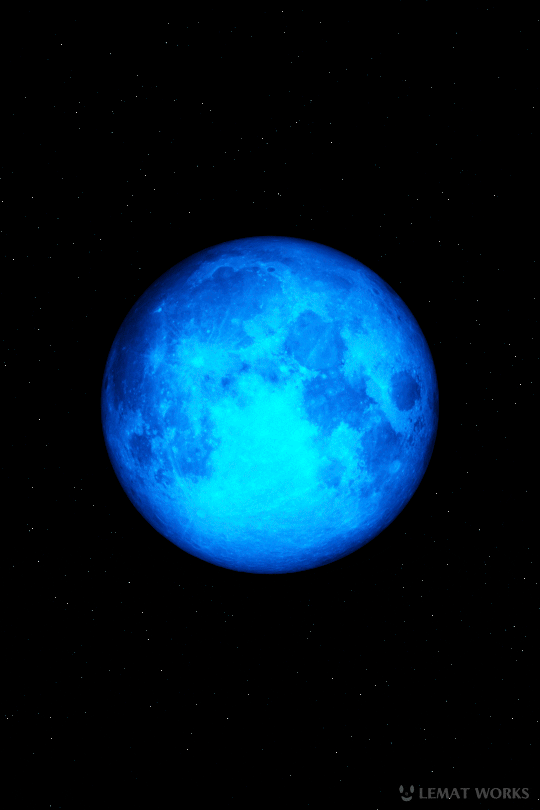
🌕 Lemat Moon 1 2 3 4 5 6 7 8 9 10 11 12 13🌗 Twinkle Night27 3 17 / instagram / Adobe Behance🌑✨

Here’s the cover I did for International Machine Consortium for their latest EP: Point of no return.
Check it out on Spotify: https://open.spotify.com/album/54fujXqIbm46LQteybIpYA?si=1OAgI5vmRWCgLR5Pk78fFA&nd=1

Ghost Form.
USS Harry S. Truman Strike Group Flyover
The U.S. Navy Flight Demonstration Squadron, the Blue Angels, flew over Nimitz-class aircraft carrier, USS Harry S. Truman (CVN 75), on a return transit to Naval Air Station Pensacola following their annual flight over the U.S. Naval Academy commissioning ceremony May 20, 2020. The Harry S. Truman Carrier Strike Group (HSTCSG) remains at sea in the Atlantic as a certified carrier strike group force ready for tasking in order to protect the crew from the risks posed by COVID-19, following their successful deployment to the U.S. 5th and 6th Fleet areas of operation. (U.S. Navy video by Petty Officer 2nd Class Cody Hendrix)

Jupiter grom Ganymede - Vadim Sadovski

Pink Sparkles.
Twitter / Instagram / Gumroad / Patreon
KnownOrigin / SuperRare / OBJKT / Zedge
Boo-tiful Ring Galaxies

A ghoulish secret lurks within each of these gorgeous galaxies. Their rings are dotted with stellar graveyards!

These objects are called ring galaxies, and scientists think most of them form in monster-sized crashes. Not just any galaxy collision will do the trick, though. To produce the treat of a ring, a smaller galaxy needs to ram through the center of a larger galaxy at just the perfect angle.

The collision causes ripples that disturb both galaxies. The gravitational shock causes dust, gas, and stars in the larger galaxy’s disk to rush outward. As this ring of material plows out from the galaxy’s center, gas clouds collide and trigger the birth of new stars.

In visible light, the blue areas in the galaxies’ rings show us where young, hot stars are growing up. Faint, pink regions around the ring mark stellar nurseries where even younger stars set hydrogen gas aglow.
The newborn stars come in a mix of sizes, from smaller ones like our Sun all the way up to huge stars with tens of times the Sun’s mass. And those massive stars live large!
While a star like our Sun will last many billions of years before running out of fuel, larger stars burn much brighter and faster. After just a few million years, the largest stars explode as supernovae. When massive stars die, they leave behind a stellar corpse, either a neutron star or black hole.

When we turn our X-ray telescopes to these ring galaxies, we see telltale signs of stellar remnants dotted throughout their ghostly circles. The purple dots in the X-ray image above are neutron stars or black holes that are siphoning off gas from a companion star, like a vampire. The gas reinvigorates stellar corpses, which heat up and emit X-rays. These gas-thirsty remains are beacons lighting the way to stellar graveyards.
Spiral galaxies — like our home galaxy, the Milky Way — have curved arms that appear to sweep out around a bright center. The dust and gas in those spiral arms press together, causing cycles of star formation that result in a more even mix of new stars and stellar corpses scattered throughout our galaxy. No creepy ring of stellar corpses here!
To visit some other eerie places in the universe, check out the latest additions to the Galaxy of Horrors poster series and follow NASA Universe on Twitter and Facebook for news about black holes, neutron stars, galaxies, and all the amazing objects outside our solar system.
Make sure to follow us on Tumblr for your regular dose of space: http://nasa.tumblr.com
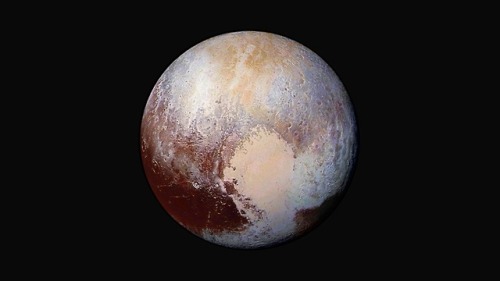

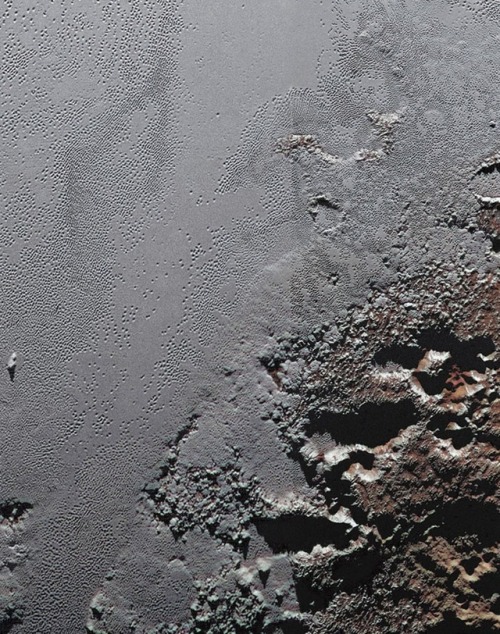
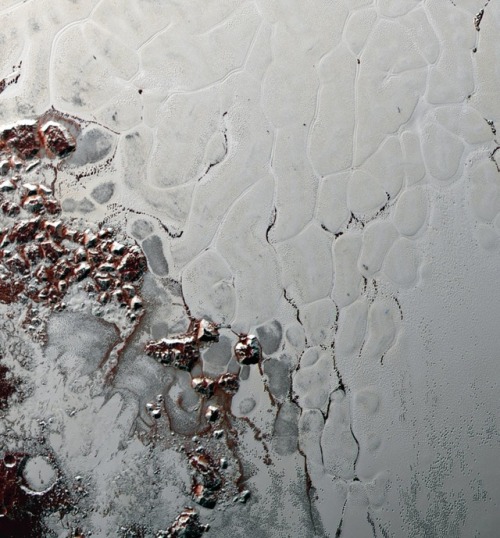
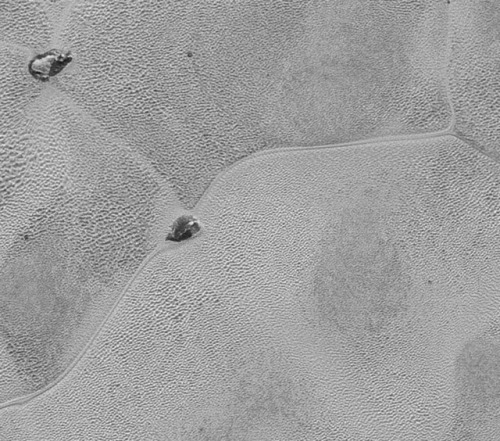
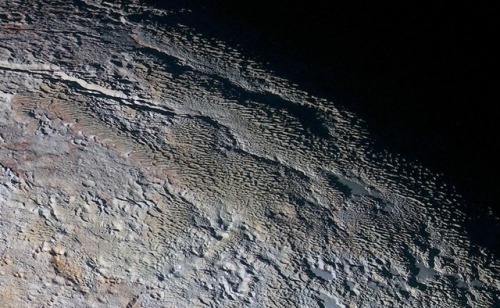
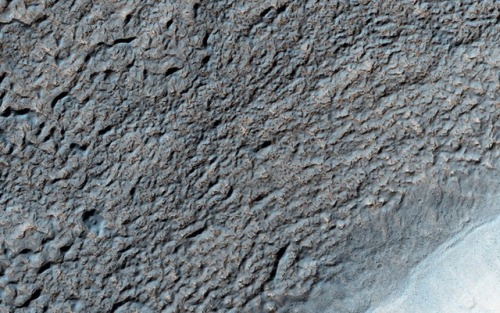
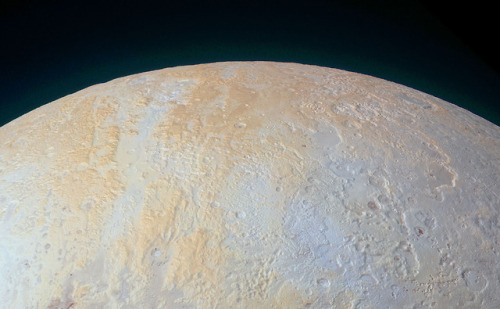
High-resolution images of Pluto taken by NASA’s New Horizons spacecraft.
The plains on Pluto’s surface are composed of more than 98 percent nitrogen ice, with traces of methane and carbon monoxide. Nitrogen and carbon monoxide are most abundant on the anti-Charon face of Pluto (around 180° longitude, where Tombaugh Regio’s western lobe, Sputnik Planitia, is located), whereas methane is most abundant near 300° east. The mountains are made of water ice. Pluto’s surface is quite varied, with large differences in both brightness and color. Pluto is one of the most contrastive bodies in the Solar System, with as much contrast as Saturn’s moon Iapetus. The color varies from charcoal black, to dark orange and white. Pluto’s color is more similar to that of Io with slightly more orange and significantly less red than Mars. Notable geographical features include Tombaugh Regio, or the “Heart” (a large bright area on the side opposite Charon), Cthulhu Macula, or the “Whale” (a large dark area on the trailing hemisphere), and the “Brass Knuckles” (a series of equatorial dark areas on the leading hemisphere). Sputnik Planitia, the western lobe of the “Heart”, is a 1,000 km-wide basin of frozen nitrogen and carbon monoxide ices, divided into polygonal cells, which are interpreted as convection cells that carry floating blocks of water ice crust and sublimation pits towards their margins; there are obvious signs of glacial flows both into and out of the basin. It has no craters that were visible to New Horizons, indicating that its surface is less than 10 million years old.
source | images: NASA/JPL
-
 epic-flight reblogged this · 4 years ago
epic-flight reblogged this · 4 years ago -
 vindur19 liked this · 6 years ago
vindur19 liked this · 6 years ago -
 pearls-and-tales-for-the-sea reblogged this · 6 years ago
pearls-and-tales-for-the-sea reblogged this · 6 years ago -
 persephone-enamored liked this · 6 years ago
persephone-enamored liked this · 6 years ago -
 thtflng liked this · 9 years ago
thtflng liked this · 9 years ago -
 thebookofginko reblogged this · 9 years ago
thebookofginko reblogged this · 9 years ago -
 itslindseyjay reblogged this · 9 years ago
itslindseyjay reblogged this · 9 years ago -
 camembertlythere liked this · 9 years ago
camembertlythere liked this · 9 years ago -
 imrryr liked this · 9 years ago
imrryr liked this · 9 years ago -
 clavich0rd reblogged this · 9 years ago
clavich0rd reblogged this · 9 years ago -
 wildbynature liked this · 9 years ago
wildbynature liked this · 9 years ago -
 afragmentcastadrift reblogged this · 9 years ago
afragmentcastadrift reblogged this · 9 years ago -
 szakember reblogged this · 9 years ago
szakember reblogged this · 9 years ago -
 drsnp liked this · 9 years ago
drsnp liked this · 9 years ago -
 notyourbatmans reblogged this · 9 years ago
notyourbatmans reblogged this · 9 years ago -
 tpulov liked this · 9 years ago
tpulov liked this · 9 years ago -
 afragmentcastadrift liked this · 9 years ago
afragmentcastadrift liked this · 9 years ago -
 aquafunk098 liked this · 9 years ago
aquafunk098 liked this · 9 years ago -
 natmuneton liked this · 9 years ago
natmuneton liked this · 9 years ago -
 ictstudies-blog liked this · 9 years ago
ictstudies-blog liked this · 9 years ago -
 zvbxrplane reblogged this · 9 years ago
zvbxrplane reblogged this · 9 years ago -
 scottdiego liked this · 9 years ago
scottdiego liked this · 9 years ago -
 majoules reblogged this · 9 years ago
majoules reblogged this · 9 years ago -
 ericdimartino liked this · 9 years ago
ericdimartino liked this · 9 years ago -
 sphinxnomore liked this · 9 years ago
sphinxnomore liked this · 9 years ago -
 thulium liked this · 9 years ago
thulium liked this · 9 years ago -
 happythoughthall reblogged this · 9 years ago
happythoughthall reblogged this · 9 years ago -
 happythoughthall liked this · 9 years ago
happythoughthall liked this · 9 years ago -
 aaadonkeyshine liked this · 9 years ago
aaadonkeyshine liked this · 9 years ago -
 theshyweirdo liked this · 9 years ago
theshyweirdo liked this · 9 years ago -
 vatnik-ivan liked this · 9 years ago
vatnik-ivan liked this · 9 years ago -
 solarnoons reblogged this · 9 years ago
solarnoons reblogged this · 9 years ago -
 solarareolimax liked this · 9 years ago
solarareolimax liked this · 9 years ago -
 stoic-unicorn liked this · 9 years ago
stoic-unicorn liked this · 9 years ago -
 nickthehomosapian reblogged this · 9 years ago
nickthehomosapian reblogged this · 9 years ago -
 theblackarrw liked this · 9 years ago
theblackarrw liked this · 9 years ago
